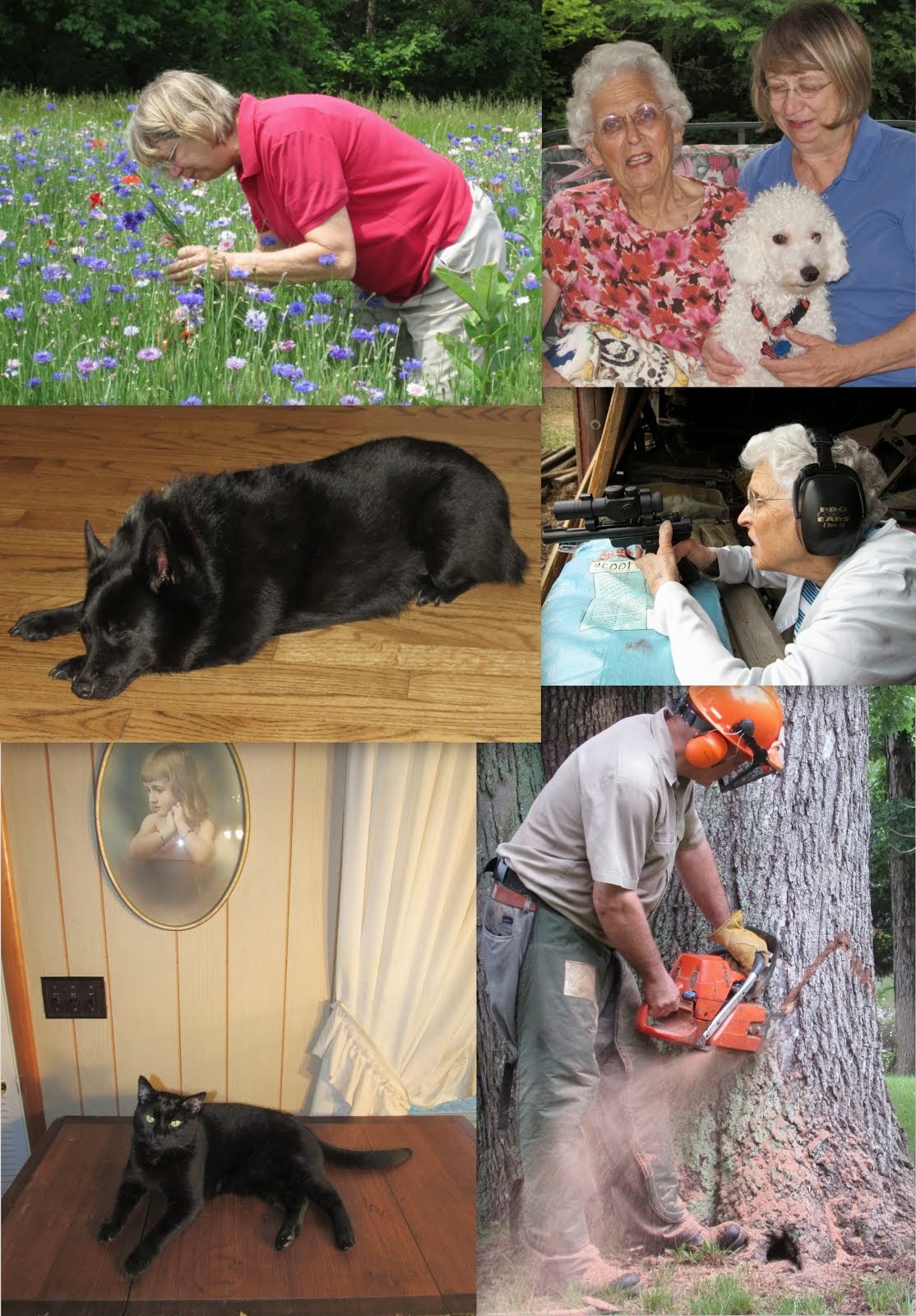
The first stump also shows a strange misconception that I run into frequently. The cutter of this tree cut across the stump at an angle, ostensibly "So the stump will push the tree over!" Stumps do not push on a tree; gravity can pull it over, wind can push it over, you can wedge it over, you can pull it over with a cable, you can push it over with a skidder, but the stump DOES NOT PUSH!
A barber chair occurs when a tree goes into motion while the hinging wood is too thick to bend. Since it can't bend, the tree splits lengthwise. This happens suddenly, often explosively. If the cutter is in the way of the butt end of the log when it happens, he will suffer severe crushing injuries when the tree smashes into him. If the tree misses him at this point, the danger is not over. The tree becomes airborne on a springpole, and it is anybody's bet what the tree will do next. You literally cannot get away fast enough.
The stump below was the site of a fatal accident. The cutter had been ruining trees all over this woods with poor cutting technique, and this tree was his final mistake. He cut a small wedge (barely visible on the ground) on the left side of the stump, intending the tree to fall that way. He then bored through the tree where you see the step on the right side of the stump. Next he cut to the left, severing all the wood to the wedge cutout. The tree was heavy to the right, and when he severed the wood on the left, the tree split to the right and stood on a springpole, which you can see lying behind and to the right of the stump. The cutter ran, but the tree rotated counter-clockwise on the springpole, and the butt of the log hit the logger on the back of the head, killing him. His body was lying 12 feet from the stump.
If the cutter had been using a hinge to control his trees he would still be alive. There is a lot of resistance to learning the new methods of falling trees, mostly because we are all reluctant to change methods we have become accustomed to. Most loggers I encounter are still using cutting methods developed with axes and crosscut saws. Modern chainsaws allow us to bore through trees, giving us the advantage of a hinge of proper thickness before the tree is set in motion. This is a skill well worth developing.
If you use a chainsaw, you should seek out a safety instructor who can teach you the latest methods. Your life could depend on it.

<







No comments:
Post a Comment